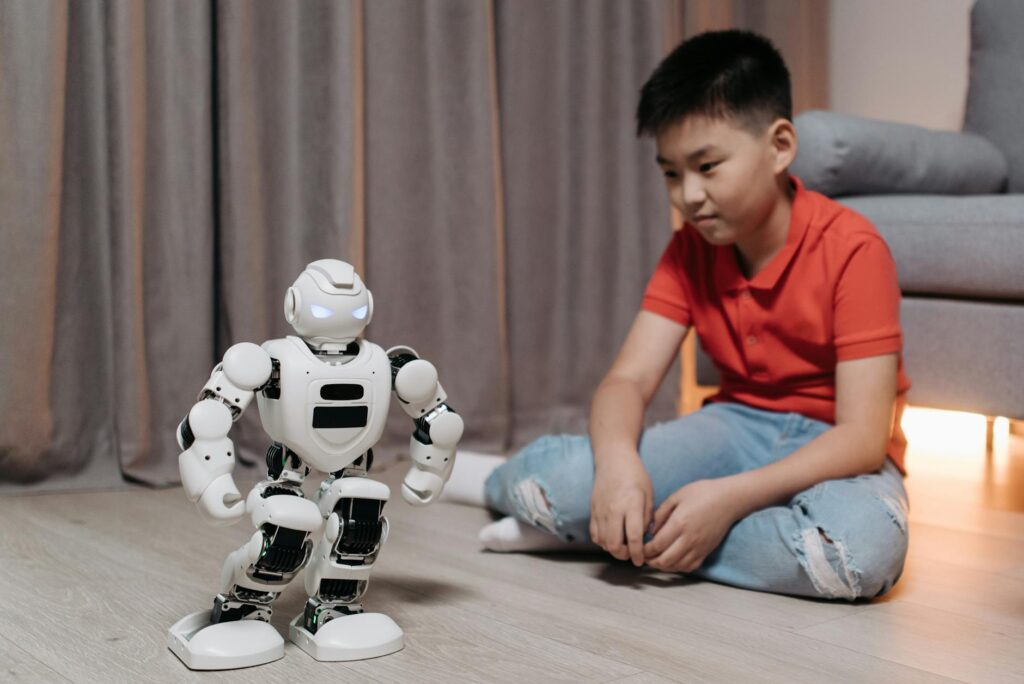The digital landscape is undergoing a profound transformation, moving beyond mere connectivity to genuine intelligence. Artificial intelligence, once confined to the realm of science fiction and specialized labs, is now quietly, yet powerfully, integrating itself into the fabric of our daily lives. From the smartphones in our pockets to the appliances in our kitchens, and the complex systems powering our cities, AI is no longer an optional feature but a fundamental component. This pervasive integration is redefining what it means for technology to be “smart,” making intelligent, responsive, and personalized experiences the new everyday standard across virtually every device and application we interact with.
The silent intelligence at work
Often, the most impactful innovations are those we barely notice. AI’s seamless weaving into our devices exemplifies this. Consider your smartphone: its camera automatically optimizes settings for different lighting conditions, the predictive text anticipates your next word, and voice assistants understand complex commands, not just keywords. These aren’t just clever algorithms; they are sophisticated AI models working in the background, learning from vast datasets and your personal interactions to make your device more intuitive and effective. This “silent intelligence” extends to noise-canceling headphones that adapt to your environment, smartwatches that monitor health metrics with increasing accuracy, and even the efficiency of your web browser, all enhanced by AI that learns and optimizes without explicit user intervention.
Beyond the smartphone: AI in our homes and workplaces
AI’s reach extends far beyond our personal devices, permeating our living spaces and professional environments. Smart home ecosystems, once a niche luxury, are now commonplace. Thermostats learn your daily routines to optimize energy consumption, refrigerators track inventory and suggest recipes, and security cameras differentiate between a pet and a person. In the workplace, AI-powered tools are revolutionizing productivity and decision-making. Customer relationship management (CRM) systems use AI to predict customer needs, enterprise software automates mundane tasks, and data analytics platforms provide actionable insights, previously impossible to extract. This integration creates environments that are not just automated, but truly intelligent and adaptive.
The growth of smart technology adoption highlights this pervasive trend:
| Category | 2020 Adoption Rate (Approx.) | 2023 Adoption Rate (Approx.) | 2027 Projected Growth (CAGR) |
|---|---|---|---|
| Smart Home Devices | 25% households | 35% households | ~15% |
| AI in Enterprise Software | 30% companies | 50% companies | ~20% |
| Wearable Technology | 15% adults | 25% adults | ~12% |
Note: Figures are approximate and illustrative, based on general market trends.
Personalization and predictive power
Perhaps one of the most compelling aspects of integrated AI is its capacity for deep personalization and predictive capabilities. AI analyzes our preferences, habits, and even our biometric data to tailor experiences precisely to us. Streaming services suggest movies and music we’re likely to enjoy, fitness apps provide customized workout plans based on our performance and goals, and online shopping platforms curate product recommendations that feel eerily accurate. This isn’t just about convenience; it’s about technology anticipating our needs and desires before we even articulate them. In healthcare, AI helps predict potential health issues, while in transportation, it optimizes routes in real-time based on traffic patterns and personal preferences, making every interaction feel uniquely designed for the individual.
The future is now: Shaping a hyper-connected world
The widespread integration of AI across every device and application is fundamentally reshaping our world into a hyper-connected, intelligent ecosystem. This pervasive presence means increased efficiency, enhanced convenience, and entirely new possibilities for innovation. From smart cities that optimize traffic flow and energy grids to highly personalized educational experiences and advanced healthcare diagnostics, AI is the underlying engine driving these transformations. It empowers devices to not only perform tasks but to understand context, learn, and adapt, moving us beyond simple automation to genuine intelligence. This ongoing evolution is not a distant prospect but a present reality, continuously expanding the definition of what “smart” technology can achieve in our daily lives.
Artificial intelligence has transcended its initial boundaries, evolving from a specialized technology into the very bloodstream of our digital existence. As explored, AI is no longer an optional add-on but a foundational element in virtually every device and application we encounter daily. This seamless integration has redefined the concept of “smart” technology, making intuitive, responsive, and personalized interactions the expected norm rather than a futuristic novelty. From the unseen optimizations in our smartphones to the adaptive intelligence in our homes and the predictive power reshaping our workplaces, AI is consistently working to enhance efficiency, convenience, and user experience. Ultimately, the pervasive weaving of AI into our technological tapestry signifies a profound shift, establishing truly intelligent systems as the indispensable standard for the hyper-connected world we now inhabit.
